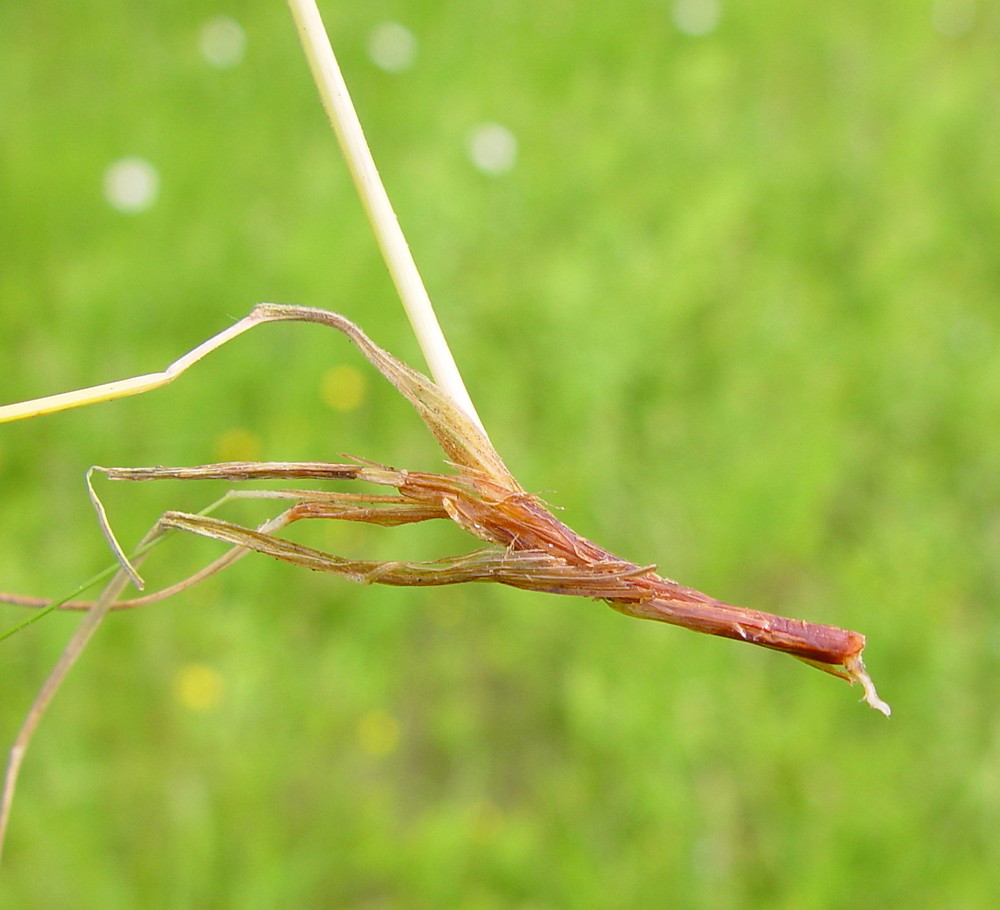Creeping Red Fescue: The Shade-Loving Cool-Season Grass

If your lawn sits under trees or you’d rather mow and fertilize less, creeping red fescue (Festuca rubra) might be your best option. Unlike tall fescue or perennial ryegrass, which demand more water and maintenance, creeping red fescue thrives in shade, tolerates low-input care, and even spreads to repair thin spots.
In this guide, we’ll explore what makes creeping red fescue unique, its pros and cons, where it thrives, and how it compares to other popular cool-season grasses like tall fescue and ryegrass.
What Is Creeping Red Fescue?
-
Scientific name: Festuca rubra
-
Growth habit: Spreads with short rhizomes (“creeping”), unlike bunch-type ryegrass or tall fescue.
-
Appearance: Very fine blades, soft texture, medium to dark green color.
-
Best traits: Excellent for shade and low-maintenance lawns.
Creeping red fescue belongs to the fine fescue group (along with chewings, hard, and sheep fescues). It’s a staple in shady lawn seed mixes.
Pros and Cons of Creeping Red Fescue
✅ Pros
-
Best shade tolerance of all cool-season grasses.
-
Low maintenance — needs less fertilizer, mowing, and water.
-
Spreads by rhizomes → fills in thin patches.
-
Cold hardy — great for northern climates.
-
Soft, fine texture → carpet-like feel underfoot.
❌ Cons
-
Poor wear tolerance — not for high-traffic lawns.
-
Heat stress — struggles in hot, humid summers.
-
Slow germination (10–14 days).
-
Prone to thatch if unmanaged.
-
Disease risks like red thread and dollar spot in poor conditions.
Where Creeping Red Fescue Thrives (and Where It Doesn’t)
Best Regions
-
Northern U.S. & Canada → cool summers and cold winters.
-
Northeast & Pacific Northwest → coastal, moist, shaded lawns.
-
High-altitude lawns → cooler summer temps.
-
Shaded lawns → under trees, near buildings, woodland edges.
Challenging Regions
-
Deep South & Transition Zone → heat and humidity stress the grass.
-
Heavy-use lawns → too delicate for sports fields or dog yards.
-
Full-sun, droughty soils → better alternatives include tall fescue.
Creeping Red Fescue vs. Tall Fescue vs. Perennial Ryegrass
| Feature | Creeping Red Fescue | Tall Fescue | Perennial Ryegrass |
|---|---|---|---|
| Germination Speed | 10–14 days (slow) | 7–12 days (moderate) | 5–7 days (fastest) |
| Shade Tolerance | Excellent | Moderate | Moderate |
| Heat/Drought Tolerance | Low–Moderate | Excellent (deep roots) | Poor |
| Wear Tolerance | Poor | Good | Excellent |
| Growth Habit | Spreading rhizomes | Bunch-forming | Bunch-forming |
| Maintenance Needs | Low | Moderate | High |
| Best Use Case | Shady, low-maintenance | Tough lawns in hot zones | Fast cover, sports fields |
👉 Choose creeping red fescue if your priority is shade and low-input care.
👉 Choose tall fescue if you want durability and drought resistance in hotter areas.
👉 Choose ryegrass if you need a quick, tough lawn that germinates almost instantly.
Planting Creeping Red Fescue
-
Best time: Early fall (Sept–Oct) or early spring (April–May).
-
Soil temp for germination: 50–65°F.
-
Seeding rate: 4–6 lbs per 1,000 sq ft.
-
Seed depth: ¼ inch or less.
-
Often blended: with bluegrass or ryegrass for balanced lawns.
Lawn Care & Maintenance
Fertilization
-
Annual nitrogen needs: 1–2 lbs per 1,000 sq ft (much lower than ryegrass/fescue).
-
Fertilize lightly in fall and spring.
Watering
-
Moderate drought tolerance once established.
-
Prefers light, infrequent watering.
-
Avoid overwatering in shade → disease risk.
Mowing
-
Height: 2.5–3.5 inches.
-
Frequency: Slow-growing → may need mowing only every 10–14 days.
Thatch Management
-
Creeping habit → may create thatch over time. Aerate or dethatch every 2–3 years.
Common Problems and Solutions
-
Red thread disease: Apply light nitrogen, improve airflow.
-
Dollar spot: Water deeply but infrequently, mow higher.
-
Summer stress: Overseed with tall fescue or ryegrass in transition zone lawns.
-
Thatch: Regular aeration helps avoid buildup.
Best Uses for Creeping Red Fescue
-
Shady lawns under trees or alongside buildings.
-
Low-maintenance lawns with limited mowing/fertilizing.
-
Blended seed mixes for northern climates.
-
Ornamental and naturalized lawns where soft, fine texture is valued.
Conclusion
Creeping red fescue is the shade king of cool-season grasses. It thrives where bluegrass, ryegrass, and tall fescue often fail — in cool, moist, and shaded environments. While it’s not built for heavy use or southern heat, its low-maintenance needs, soft feel, and spreading growth habit make it one of the most useful grasses for northern lawns.
- How to Sharpen Mower Blades Like a Pro: Safe, Simple Steps for a Cleaner Cut
- Centipede Grass: The Low-Maintenance Lawn for Warm Climates
- Bermudagrass: The Tough, Sun-Loving Lawn That Thrives in the Heat
- Zoysiagrass: The Elegant, Durable Lawn for Warm and Transitional Climates
- Mowing Height Made Simple: How to Pick the Right Height for Your Lawn (Any Grass, Any Climate)